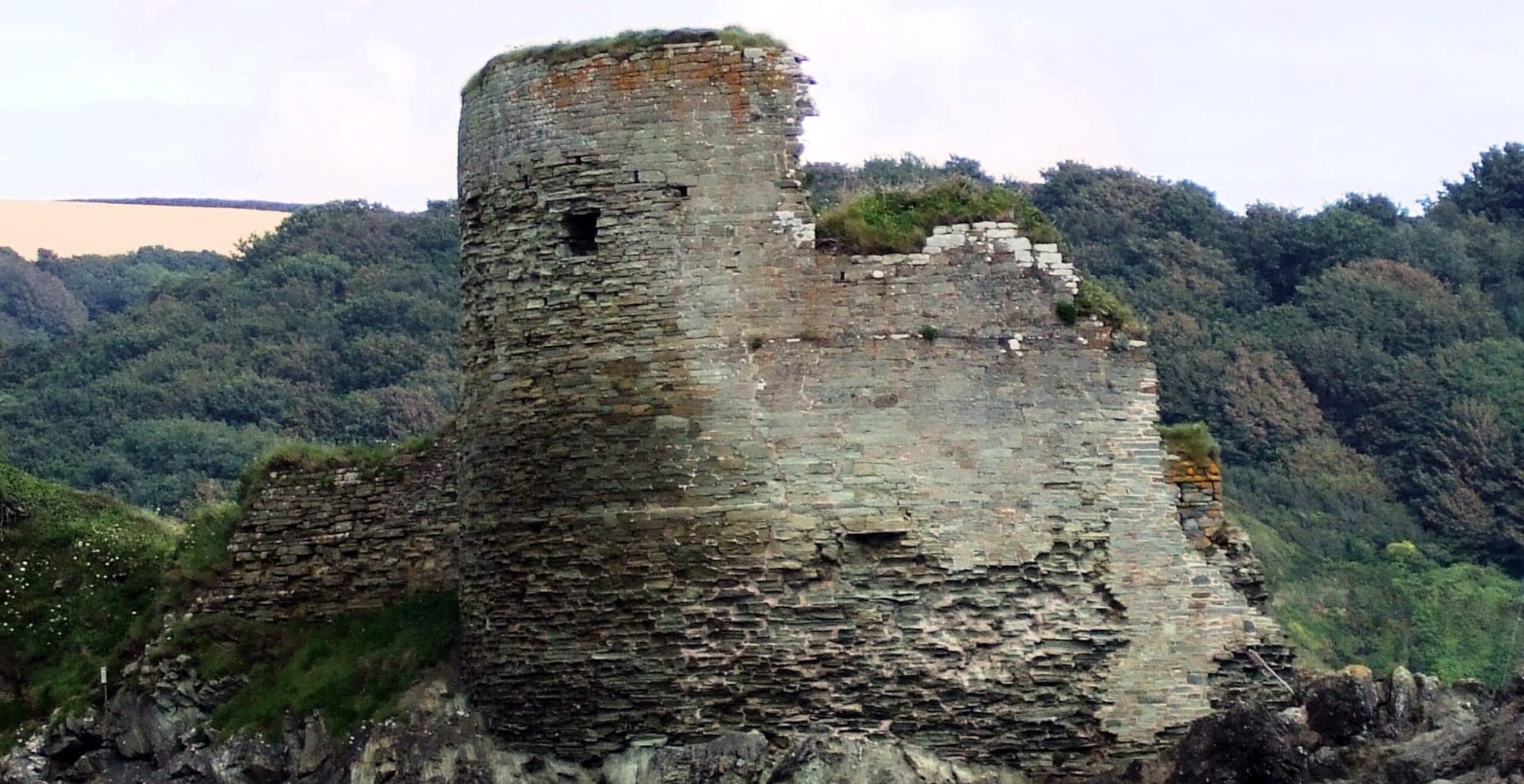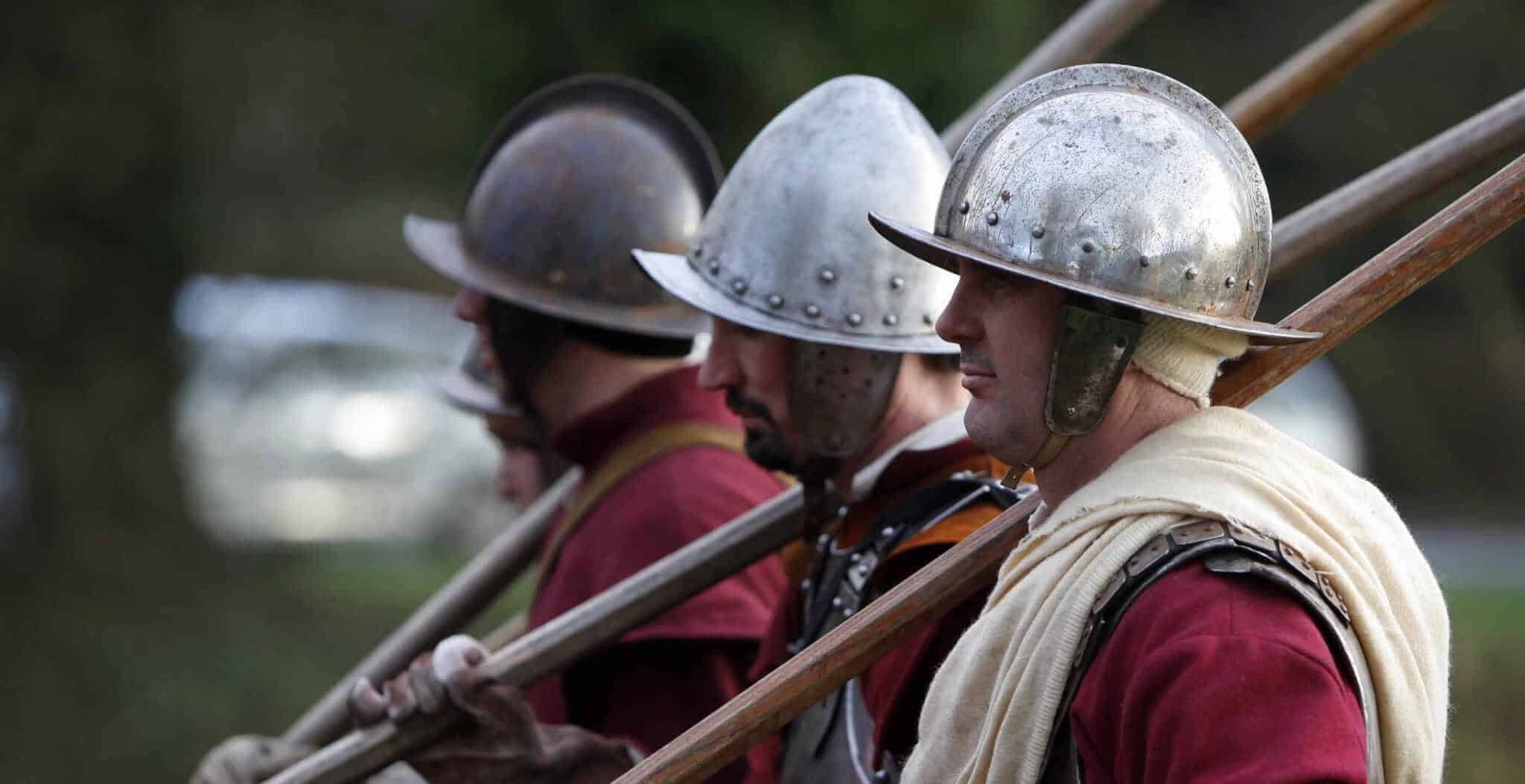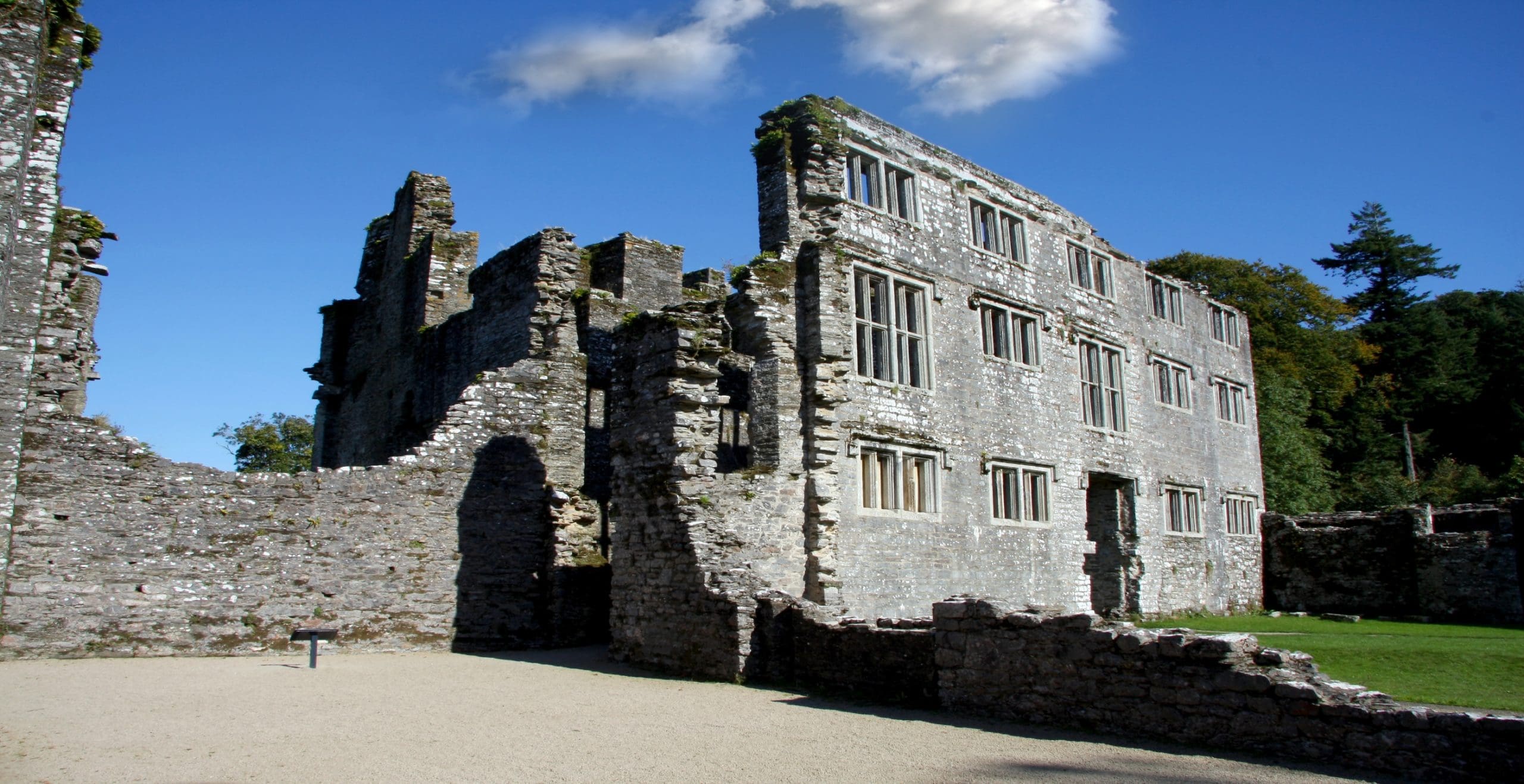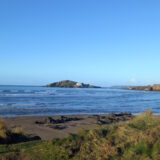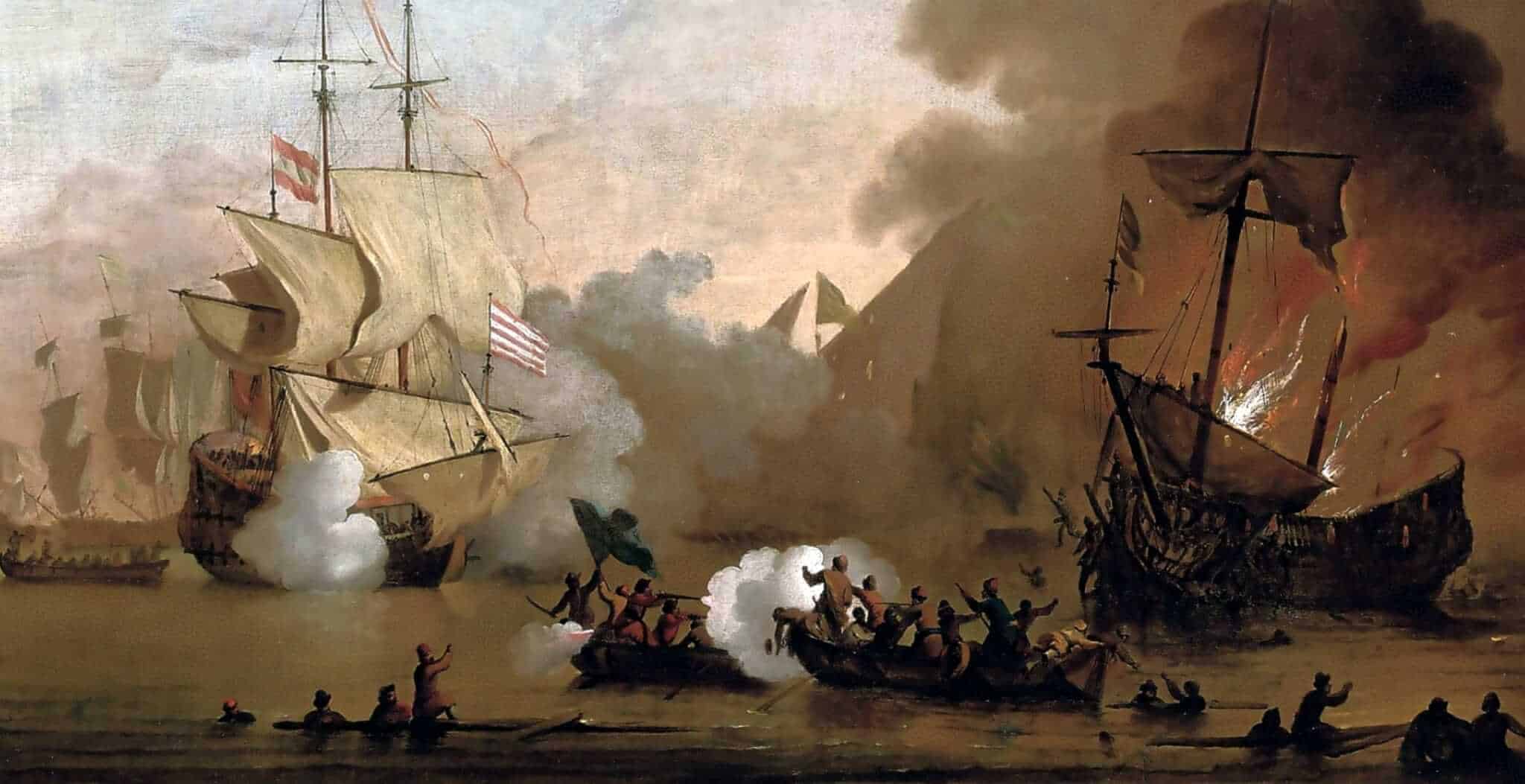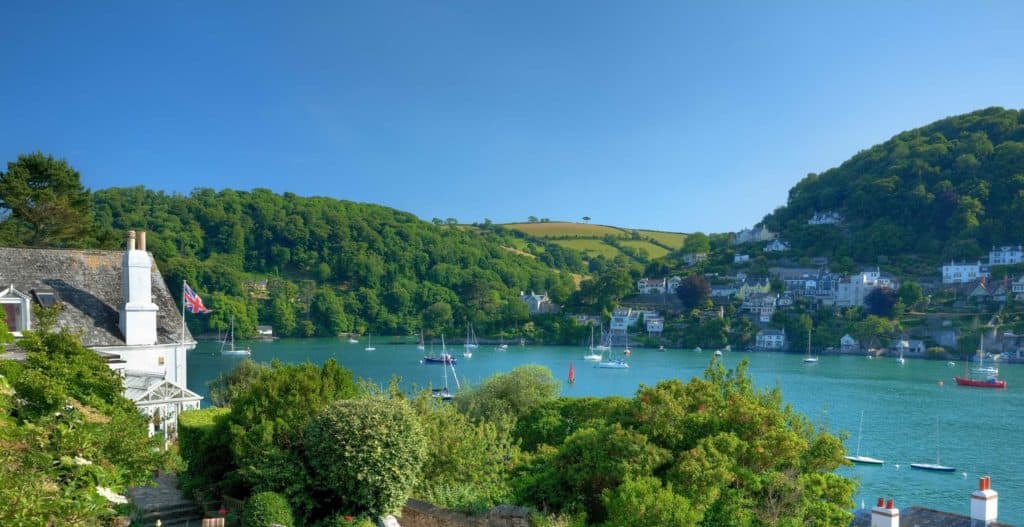On the southern tip of the South Hams sits the idyllic estuary town of Salcombe, for decades a desirable coastal retreat. Within a short walk of the holiday apartments and sailing shops, a striking ruin bears testament to the town’s all but forgotten Civil War history…
Walk south for about 15 minutes from Salcombe town centre and you come to the beautiful beach of North Sands, tucked into a small cove with expansive views out to the mouth of the Kingsbridge estuary. If you stand on the sands and turn your gaze from the sweep of the ocean, looking back upriver, you will catch a glimpse of ruined walls and a crumbled tower, standing astride tidal rocks. Battered and swamped by waves at high tide, when the sea recedes this tumbledown castle reveals itself and becomes accessible for anyone who doesn’t mind the slippery scramble.
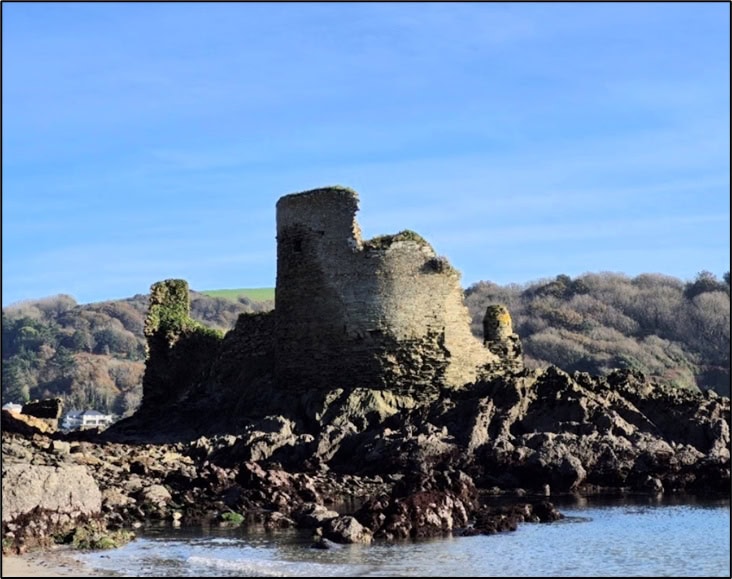
This is Fort Charles, also known as Salcombe Castle. It was built in the days when Salcombe, and its surrounding coves, were home only to a small population of fishermen, farmers, and intransigent sea traders. But sitting at the mouth of the Kingsbridge Estuary, the area was a gateway to the inland South Hams – a strategically significant location in times of war. In the 1530s, a time of rising tensions between England and France, military planners took note and decided to fortify the estuary against raiders or, worse, invaders.
Between 1535 and 1539, the fortification was constructed on a rocky river promontory less than a mile from Salcombe. The location was so inaccessible that a causeway had to be cut through the cliffs to allow access between the new Fort and the town. It is thought the building was overseen by Thomas Treffrey of Fowey, a Cornish administrator who supervised works on several other prominent coastal defences, such as St Mawes Castle. His plan seems to have been for a small but robust gun-fort; not in the same league as St Mawes, but strong enough to give an enemy pause before they dared sail into the estuary. After all, unlike St Mawes or Dartmouth Castle, the Fort did not guard a significant, wealthy population centre – this was about guarding against a potential ‘back-door’ attack on the South-West. The Fort was constructed with a central tower and seven embrasures for cannon, positioned to cover the entire mouth of the estuary. It was christened ‘The Bulwark’. There is no record of it ever seeing action against a foreign enemy – indicating that either the estuary was never deemed a worthwhile target, or that the Fort was a sufficient deterrent, as nobody was willing to try it.
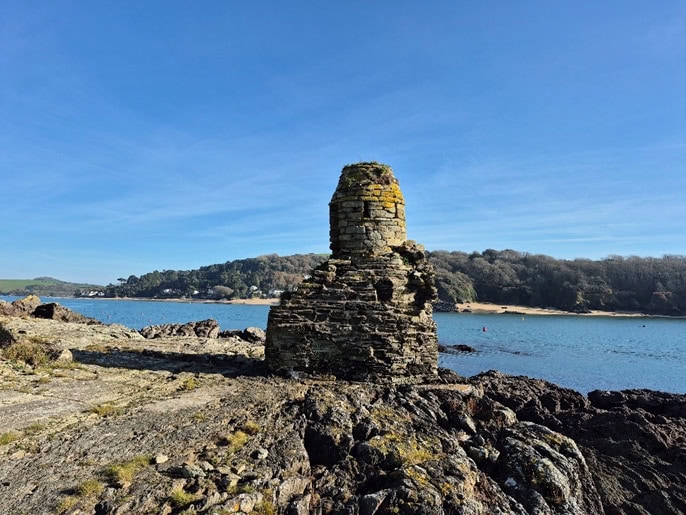
Ironically, it would take the English Civil War to bring the Fort into active use. The larger part of the South Hams remained loyal to King Charles, and the Fort was held by royalist troops under a local gentleman, Sir Edmund Fortescue. The garrison reportedly consisted of 65 men (and ‘two laundresses,’ who presumably had their work cut out). They re-christened the site ‘Fort Charles’ as a mark of their fervour in the sovereign’s cause. It was twice raided by parliamentary forces before, in 1645, the Parliamentarian ship ‘James’ sailed out from Plymouth and anchored at Salcombe. The crew occupied the town and surrounded Fort Charles (likely using the causeway to do so), calling for its surrender. However, the garrison stood resolute, knowing that they had an ally in the rising sea-tide. The Parliamentarian raiders must only have planned for a short operation; driven from the Fort by the waves, they boarded ship and sailed away.
However, the Fort would soon face a more determined enemy. In early 1646, Parliamentarian forces from Plymouth under Colonel Ralph Weldon linked up with a regiment detached from besieging Dartmouth, uniting to lay decisive pressure to Fort Charles. The Parliamentarians entrenched their cannons in the surrounding hills, bombarding the Fort, yet Sir Edmund and his garrison held firm—likely sustained by a steady source of supplies. The placement of the Fort, almost hugging the cliff-face, likely made it difficult to fire upon effectively. Sir Edmund may also have been emboldened by his success against the raiders the previous year. His garrison sufficiently frustrated their attackers that, in March, Colonel Weldon personally led a march to fetch heavier cannon from Plymouth. On their return, his party was ambushed at a river crossing near Aveton Gifford by royalist guerillas under a local Vicar, William Lane. The daring ambush failed, and Colonel Weldon returned to Salcombe with the cannon.
His gunners mounted their heavy weapons in fresh firing positions. They needed to dig special tracks through the steep hillside to do so, likely to gain better angles of fire on the Fort. Even then, the Royalists held firm. But their supplies were running dangerously low, and with the main Royalist army crushed at Naseby the previous year, relief was unlikely. At last, on 7th May 1646, Sir Edmund and his garrison surrendered. The Fort’s story of isolated, last-ditch resistance was mirrored elsewhere – for example at St Michael’s Mount in Cornwall, where a marooned Royalist Garrison held out until July 1646.
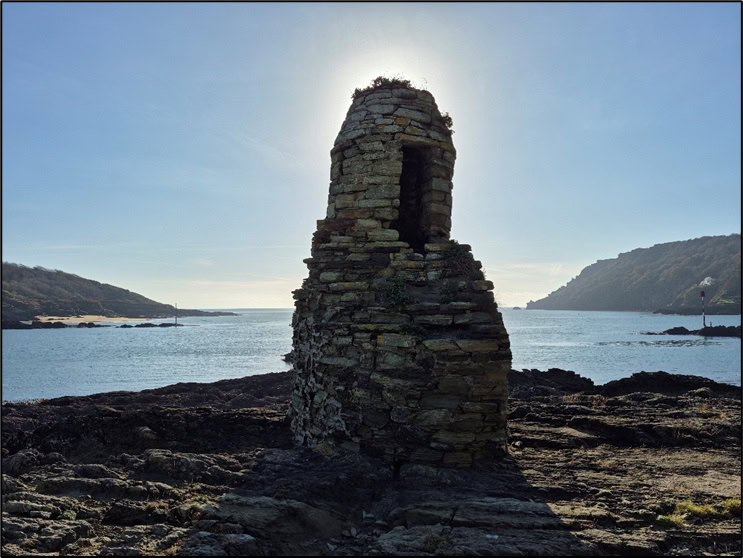
The Fort was reportedly slighted after its surrender, with its walls damaged to prevent future use. Despite this, reports suggest it remained a gun battery until 1717, implying either repairs or minimal damage (perhaps the Parliamentarians recognised the Fort’s strategic importance and hesitated to destroy it). A small watchtower was later built within the ruins, suggesting the site retained local importance.
Over the years, the name ‘Fort Charles’ was mostly dropped in favour of the colloquial ‘Salcombe Castle’. Today it is a Grade II listed building and scheduled ancient monument, being slowly eroded by the tides that once defended it. It is an obscure but striking piece of history, which many of Salcombe’s hordes of tourists miss entirely. If you visit Salcombe this year, take a stroll south to serene North Sands, and look out for the ruins of Fort Charles—remnants of a time when war reached these peaceful shores.
Mike Edwardson is a professional analyst and writer with an MA in History from The University of Sheffield. Passionate about uncovering the lesser-known stories of British history, Mike combines his analytical skills with a love for storytelling to bring the past to life.
Published: 22nd January 2025.
